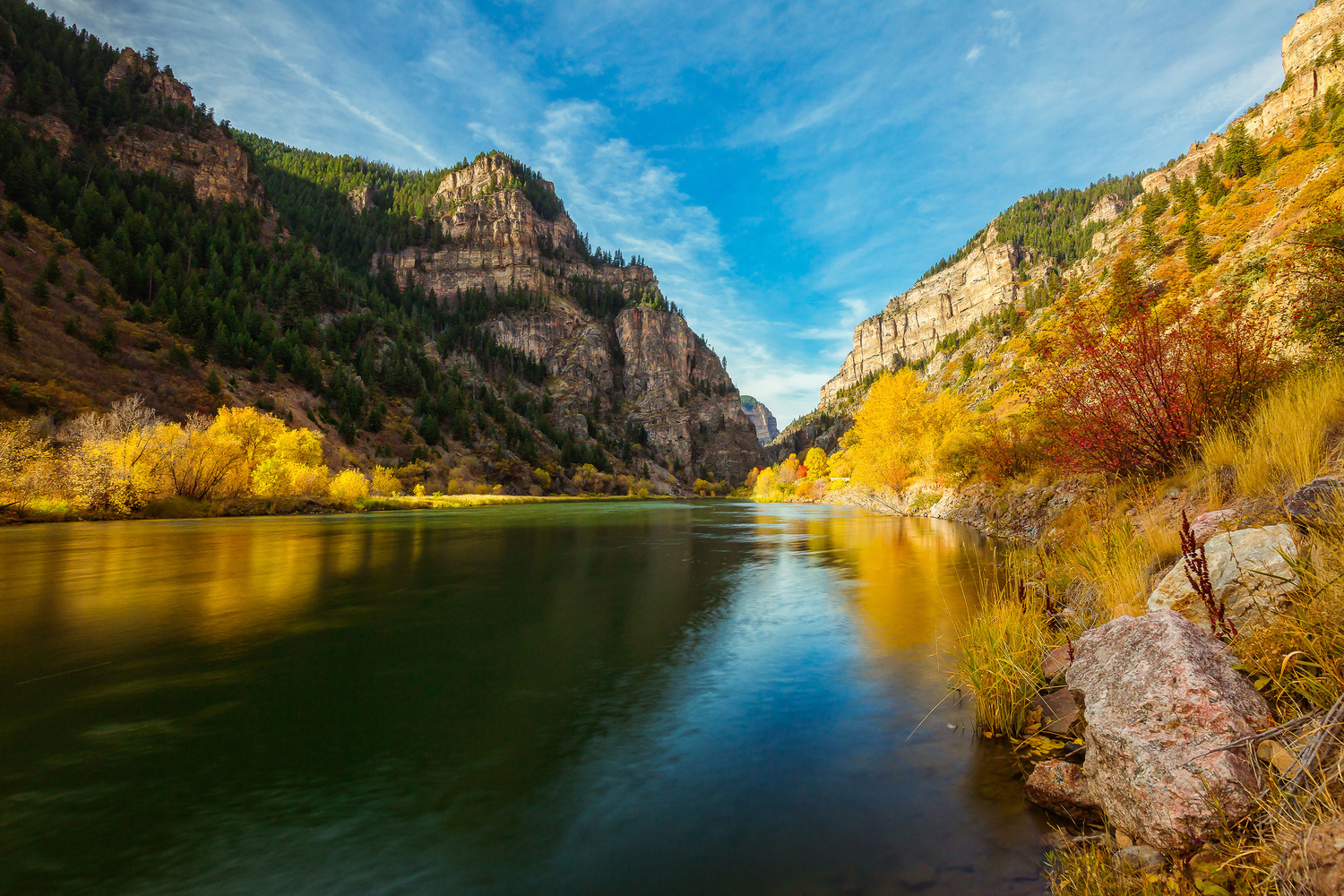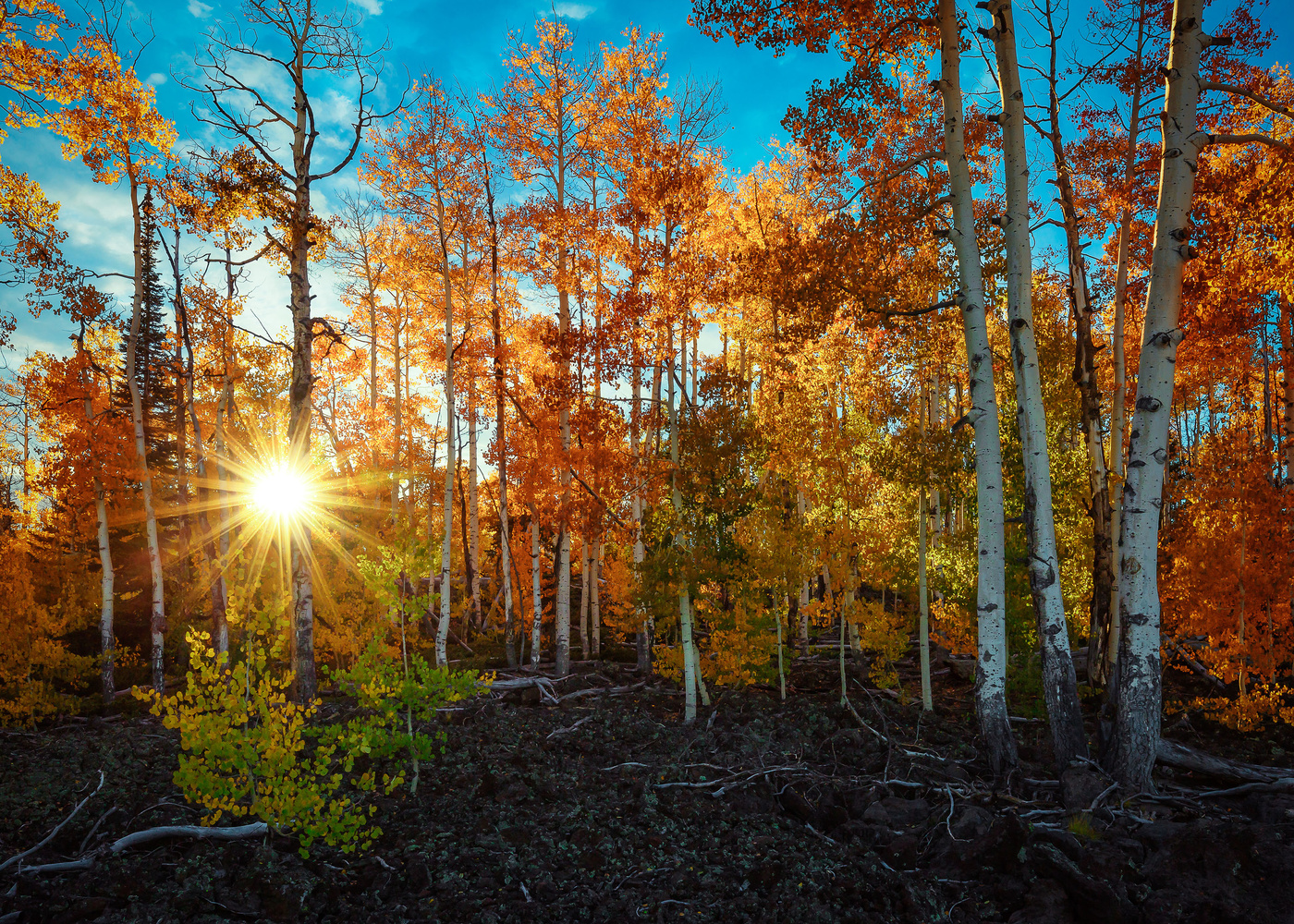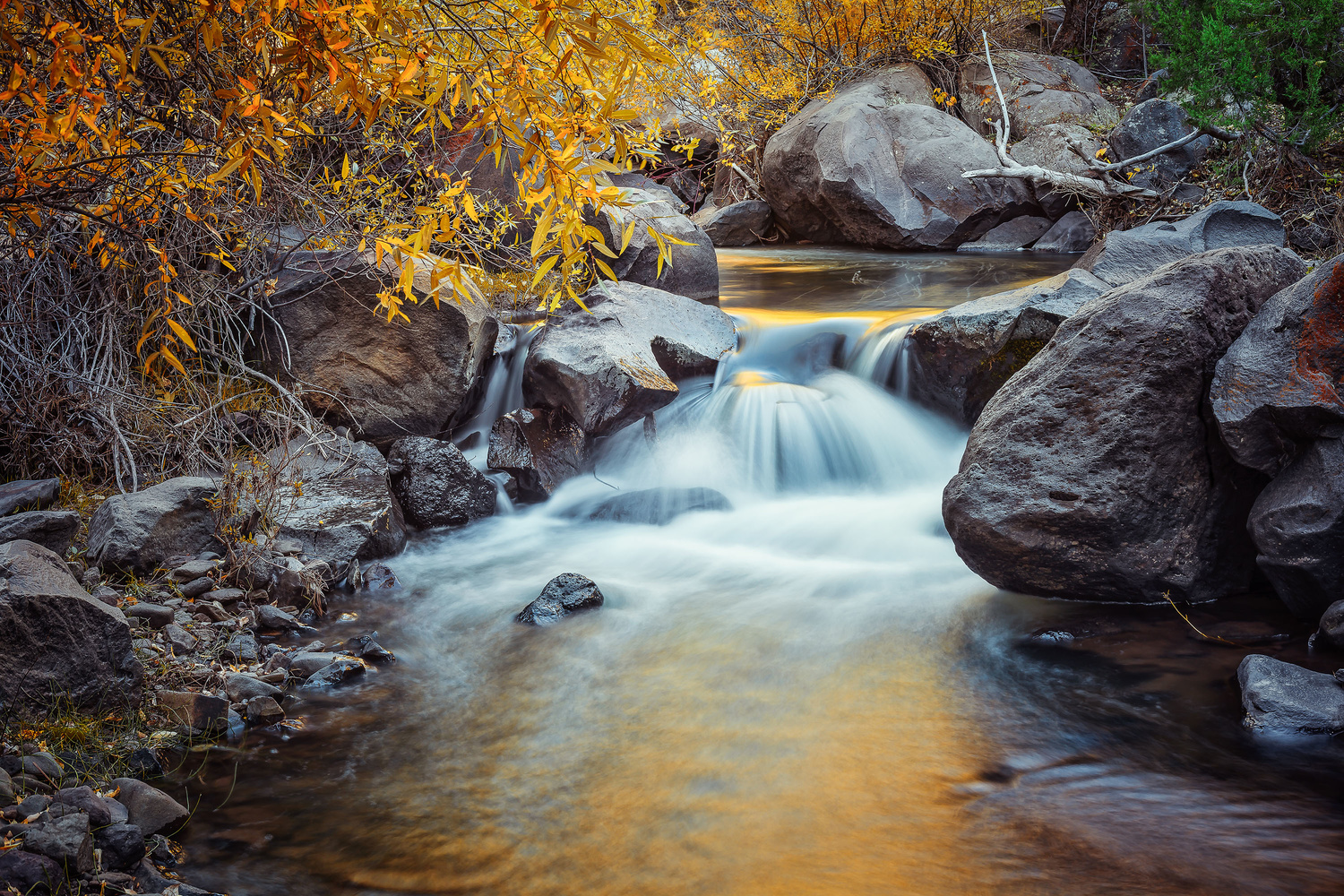That's right, it's just about every photographer's favorite time of year. The last thing that anyone wants is to have the season come and go without having had the chance to capture as much of it as we can. Whether you shoot landscapes, or portraits, or even if you don't take pictures at all but still want to have the chance to make the most of the autumn colors then here are some tips that might help.
The autumn season is fairly difficult to predict, especially on a global scale, but there are some things that you can watch in areas close to you that can help you plan for and optimize your time with the fall leaf colors.
Now, I'm going to try to keep this from being too technical, but really I think that the biochemical changes that end up resulting in the leafy colors we see during the autumn season is pretty cool. Understanding a few of these biological processes can help you predict the places you should start watching in order to plan your autumn photography excursions.

Canon 5D Mark III | Canon EF 16-35mm f/4L IS USM | 16mm • ƒ/9.0 • 2s • ISO 400

Canon 5D Mark III | Canon EF 16-35mm f/4L IS USM | 28mm • ƒ/16 • 1/125s • ISO 400
Basically, there are three different types of pigments that are involved with the color changes that occur in fall. Chlorophyll is the pigment that gives leaves the basic green colors that we see throughout spring and summer. Carotenoids are the pigments that produce those yellow, orange, and brown spectrums of colors. Then we have the Anthocyanins which are responsible for the reddish pigments in leaves. Each tree type will have differing amounts of each pigment which ultimately results in it's own unique type of coloration in the leaves. During the growing season, the leaves are continuously producing chlorophyll, which is why the dominant colors present at those times are greens.
When the days grow shorter and the nights lengthen, the trees produce less and less chlorophyll until eventually the chlorophyll production stops completely and whatever left of that pigmentation is destroyed. When this happens the carotenoids and anthocyanins, which are already present in the leaves, are then unmasked and those pigments show through. The amount of those pigments present is determined by the type of tree or bush as well as the health of those particular plants during the growing season. Bark beetles, other insects, and diseases that damage trees can have an impact on how those colors end up looking during the fall season.

Canon 5D Mark II | Canon EF 50mm f/1.4 USM | 50mm • ƒ/22 • 4s • ISO 50

Canon 5D Mark III | Canon EF 16-35mm f/4L IS USM | 16mm • ƒ/6.3 • 15s • ISO 40
The amount of color that develops during the season, and the brilliance that it displays, is in large part related specifically to the weather conditions both before and during the time when the chlorophyll dwindles. Temperature and moisture levels are the key influences during this time. The gradual onset of autumn, where the days are warmer and sunny while the nights are cool but not freezing, is the set of circumstances where the leaf colors will show with the most vibrancy. Rapid progression into freezing temperatures causes the leaves to close their veins much quicker, which reduces the amount of sugars and pigments that are left in the leaves. This causes the leaves to progress from a leafy green state to brown and leaving the trees much quicker, resulting in much less of a color display.
Altitude plays into this realm of timing, as does proximity to the equator. If you have ever taken a hike up a mountain, chances are you noticed how the temperatures at the base are much warmer than the temperatures that exist at the summit. This is basic earth science, the higher you go, the cooler the air will be. The trees that wil start to change in color will be found at the highest possible altitude. I say highest possible because there are indeed altitudes in which trees and plant growth simply cannot survive. As a basic rule of thumb, fall color changes move down the mountain, or down the temperature zones. This is why locations further north experience their fall season much earlier than locations much closer to the earth's equator.

Canon 5D Mark III | Canon EF 16-35mm f/4L IS USM | 16mm • ƒ/10 • 15s • ISO 400

Canon 5D Mark III | Canon EF 16-35mm f/4L IS USM | 20mm • ƒ/14 • 1/125s • ISO 400
Basically, the best way that I have found to start tracking and planning locations for autumn shoots is to really start watching weather reports. Specifically, start tracking locations that are either the furthest north or that are at the highest altitude. When it starts cooling off and you know that the color changes are coming, start scouting some of those locations. As soon as that furthest, or highest, location starts turning color then that should give you a rough gauge to operate on to start planning shoots in lower locations. Here in Utah, every year is completely different than the year before. For us, fall is about three weeks later than it was last year, and our leaves have just barely started turning.
For those of you who have yet to see any leafy changes yet, I recommend to do some pinpointed Google Weather searches for any locations that might give you a clue into how quickly your autumn season is progressing as well as checking specifically into the locations that you want to work in. Pay attention to temperatures, dramatic changes in temperature, and moisture content. Each of those indicators will give you that much more of a head start in planning for your autumn photographs.

Canon 5D Mark III | Canon EF 16-35mm f/4L IS USM | 35mm • ƒ/16 • 4s • ISO 400

Canon 5D Mark III | Canon EF 70-200mm f/2.8L IS II USM | 70mm • ƒ/10 • 10s • ISO 400
In addition to tracking weather patterns and temperature fluctuations, you can also start looking into precipitation factors. Since moisture does have a large impact on plant growth, which then plays a significant part in the leaf color change cycle, areas that have good consistent rainfall will have a much stronger chance at displaying those vibrant colors during autumn. Depending on where you live, there might be enough of a difference in which parts of the land receive rain and which do not. Those locations are worth noting because it will help you plan where to shoot first, where to shoot most, and which locations might not yield much color at all.
It may sound like a lot of work, but checking into a weather tracker once a day and making a quick note could have a much bigger payoff in the long run. Plus, these days, you likely only need a single website or app to tell you all those pieces of information. Or, if you're like me, have 15 different ones on your phone just show you can show your friends all these cool weather apps that you carry with you and they'll just think you're that much more of a hero. Big social payout right there. I hope this helps you make the most of the autumn colors near you. I'd love to see what epic autumn shots you acquire this season, so make sure to share your shots with us. Post them to your profile and who knows, your shot might just make it in to the Fstoppers Photo of the Day hall of fame.







In Wisconsin we have a nice map I usually go check this time of the year, that gives a good estimate of the peak color in each county
https://www.travelwisconsin.com/fall-color-report
That is AWESOME!! I am so jealous right now!! We don't have anything like that for Utah.
Backlighting is the key to colors standing out. Plus not over saturating the midtones.
love this!
Minnesota has a nice color map with regular update reports as well:
http://dnr.state.mn.us/fall_colors/index.html
I use IG geostories to monitor the color change. Just type in a popular location of town and you'll see snapshots of the area. I am monitoring Oxbow Bend in Yellowstone through IG and they are still very green.
weather.com gives you a "peak" idea as well for your area